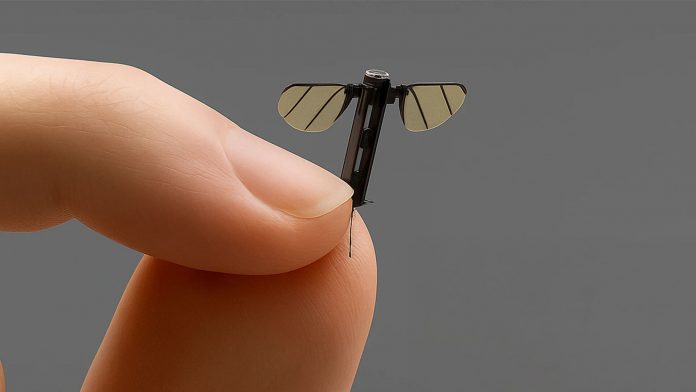China has developed a mosquito-sized drone capable of performing battlefield surveillance and reconnaissance missions, adding to its expanding portfolio of military micro-robotics. Researchers at the National University of Defense Technology (NUDT) unveiled the miniature aircraft during a state television broadcast, showcasing its compact design with flapping wings and fine landing legs built for covert operations.
What capabilities does this microdrone have?
The tiny unmanned aerial vehicle (UAV) features two flapping, leaf-shaped wings and three hair-thin legs, allowing it to perch or land on various surfaces. Its compact size allows it to perform surveillance, reconnaissance and special missions on the battlefield, according to NUDT student Liang Hexiang, who demonstrated the drone during a CCTV 7 military broadcast.
The microdrone integrates power systems, control circuits and sensors into a compact frame, allowing it to gather information while remaining concealed. The small scale presents significant engineering challenges, requiring the miniaturization of all core components without sacrificing performance.
How does it compare to other countries’ microdrone programs?
China’s mosquito-sized drone reflects broader global efforts to develop micro-UAVs for military and civilian purposes. The U.S., Norway and other nations are also pursuing similar technologies.
Norway’s Black Hornet series, widely deployed by Western militaries, offers a comparable palm-sized platform. The latest Black Hornet 4 model, produced by Teledyne FLIR Defence, features enhanced battery life, improved weather durability and increased communication range. In 2025, it received the U.S. Department of Defense’s Blue UAS Refresh award.
The U.S. Air Force confirmed in 2021 that it was developing its microdrones, though no operational models have been publicly disclosed since.
What non-military uses exist for microdrones?
While these systems are advancing rapidly in military contexts, micro-robotics research extends into other fields. Harvard University’s RoboBee project, for example, developed tiny drones capable of flying, landing and even transitioning from water to air.
Similar technologies are being studied for applications in medicine, including drug delivery, surgical assistance, diagnostics and imaging.
Environmental monitoring is another potential application area. Future microdrones could contribute to pollution tracking, agricultural crop monitoring and disaster response by gathering data in hard-to-reach or hazardous areas.
While the mosquito-sized UAV has received attention, it is one of several robotic technologies under development at China’s National University of Defense Technology. The same televised report also featured humanoid robots and other prototypes being developed for potential military applications.

